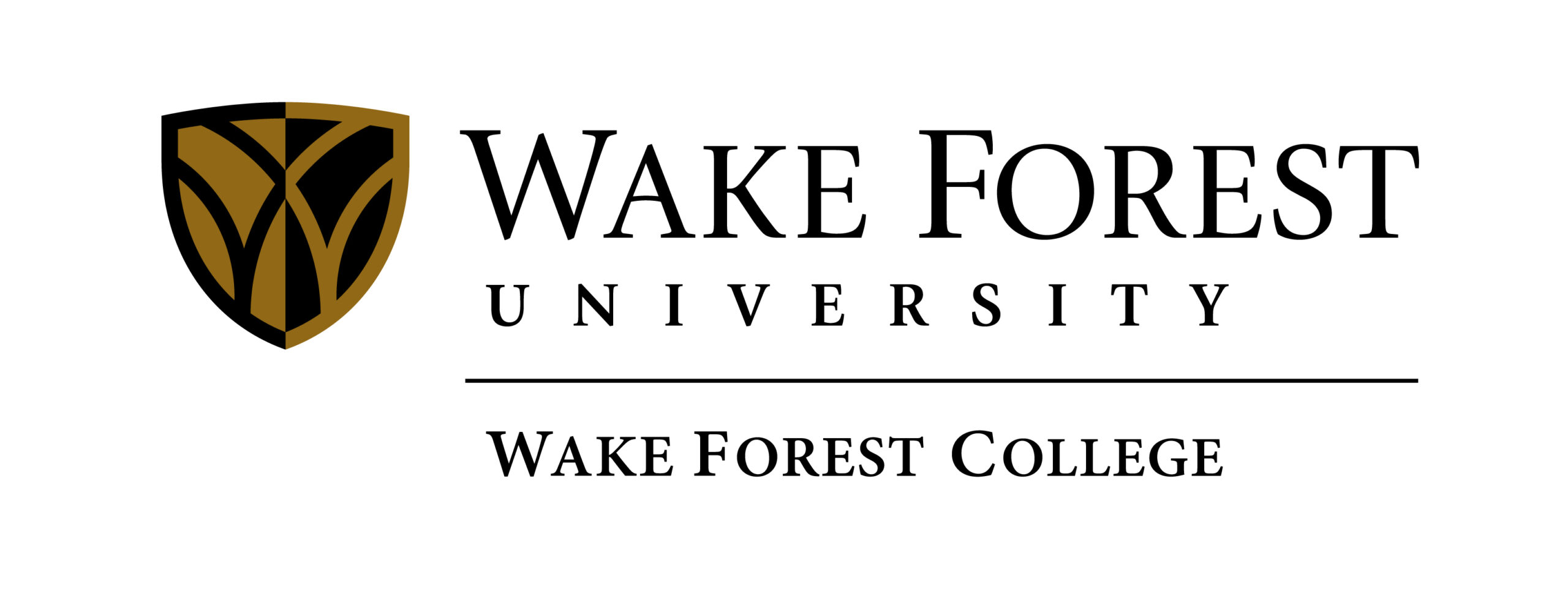Public Artist Rudy Shepherd (’98) Joins Art Department As Professor of Sculpture

By Bethany Leggett
Energy, absorption, evil, empathy, and healing. For more than 20 years now, Rudy Shepherd (‘98) has shaped such feelings and concepts as he carved, painted, and performed solo exhibitions, public art projects, and group exhibitions across the nation. And soon, he will be bringing his visionary mindset back to Wake Forest when he joins the faculty in Fall 2024.
“The opportunity to bring Professor Shepherd and his expertise to Wake Forest provides an unparalleled opportunity to give our students the best in experiential learning and community engagement through the study and practice of art,” said Dr. Morna O’Neill, Chair of the Department of Art. “Shepherd is an artist with a thoughtful, empathetic, and successful creative practice who regularly engages students as collaborators and creative partners.”
Shepherd returns to his alma mater after an extensive and successful professional career that includes high-profile national and international solo and group exhibitions across New York. His public portfolio and exhibition pieces spark essential conversations about race, identity, and the nature of evil. His extensive work with public and private collections also speaks to his reputation resonates across the art world. In 2021, Shepherd joined the Board of Trustees at the Aldrich Contemporary Art Museum, and he’s currently working on a series of paintings that he envisions as a trilogy of shows, the first of which will be this April at Kates-Ferri Projects in NYC.
In addition to his public art portfolio, Shepherd has held several academic positions at such institutions as Parsons School for Design, Bloomfield College, and San Francisco Art Institute. Since 2010, Shepherd has been a faculty member at Pennsylvania State University School of Visual Arts, where he was granted tenure in 2016 and promoted to full professor in 2021.
Shepherd’s return to Wake Forest is an exciting, full-circle journey for the once-undergraduate with honors in Studio Art and Biology. When he steps back into the studio in Scales this fall, it will be as the new Professor of Sculpture, replacing the now-retired David Finn, who had taught him as a student.
“I am sure I will draw from the things David Finn did when I took his sculpture class as an undergrad. I remember collecting found materials at some sort of reuse store in town. I wonder if it’s still around. I am particularly looking forward to teaching Public Art at some point and also a Performance Art class. I have learned so much during my time at the Penn State School of Visual Arts that I am excited to share with Wake students,” Shepherd said.
At Penn State, Shepherd’s courses have broadened the school’s offerings of performance art and installation art, an area of focus that would offer new and exciting opportunities for the curriculum at Wake Forest, said O’Neill. Additionally, his Pro Humanitate commitment and interdisciplinary approach will broaden collaborations for his students and the art community at large.
In October 2023, Shepherd came to Wake Forest and met several students before giving a public talk on his work. O’Neill invited her eighteenth-century European art class to attend, and student Bella Wang (‘24) who is an Accounting major taking O’Neill’s class, wrote of the experience: “I wanted to take a moment to reflect on Rudy’s inspiring talk on affirmative actions last Wednesday. I am very inspired by his demonstration of art, and the power of collaboration … The idea that art needs interaction is a powerful one. His journey showcases how every aspect of our lives can contribute to the creation of meaningful and impactful art. His emphasis on the artist’s self-being reflected in their work reminds me that art is not just about what we see but also about the artist’s journey and emotions.”
In particular, Wang was moved by Shepherd’s painting of his public sculpture, “Black Rock Negative Energy Absorber,” in Jackie Robinson Park in Harlem. “The painting of his sculpture in Soho, NYC, where he explored negative and positive space, left a lasting impression on me. It’s a testament to the power of art to engage viewers on multiple levels, not just visually but also intellectually and emotionally,” Wang said.
It was a poignant moment that O’Neill found powerful, too. “I was struck by the way in which the best public art can both affirm a space and alter our perception of that space. It was also very moving when a student in the audience for Rudy’s talk recalled that Jackie Robinson Park was his local park as a child, and he appreciated the way that Rudy’s work re-oriented and responded to that space,” O’Neill said.
Dr. Jackie Krasas, Dean of the College and Graduate School of Arts and Sciences, is thrilled that Shepherd is returning to Wake Forest in his new role. “I’ve heard how some faculty have known Rudy Shepherd from his student days, and others have interacted with him through talks and exhibitions he has participated in as an active alumnus. It’s exciting to have him return as a permanent faculty member, and his artistic vision will broaden art access both inside the classroom and beyond,” Krasas said.
In addition to working on exciting projects to come with students, faculty, and other campus partners, Shepherd is ready to dive back into the art scene across Winston-Salem. “I am very much looking forward to going to SECCA again. I remember seeing some really important exhibitions there when I was an undergraduate student. The Tim Hawkinson show, the Inigo Manglano-Ovalle show, the Walton Ford show, and many others. I even got to exhibit there the year after I graduated. It would be amazing to have an exhibition at SECCA again at some point in the future,” he said.
“The opportunity to bring Professor Shepherd and his expertise to Wake Forest provides an unparalleled opportunity to give our students the best in experiential learning and community engagement through the study and practice of art. Shepherd is an artist with a thoughtful, empathetic, and successful creative practice who regularly engages students as collaborators and creative partners.”
Dr. Morna O’Neill, Chair of the Department of Art

